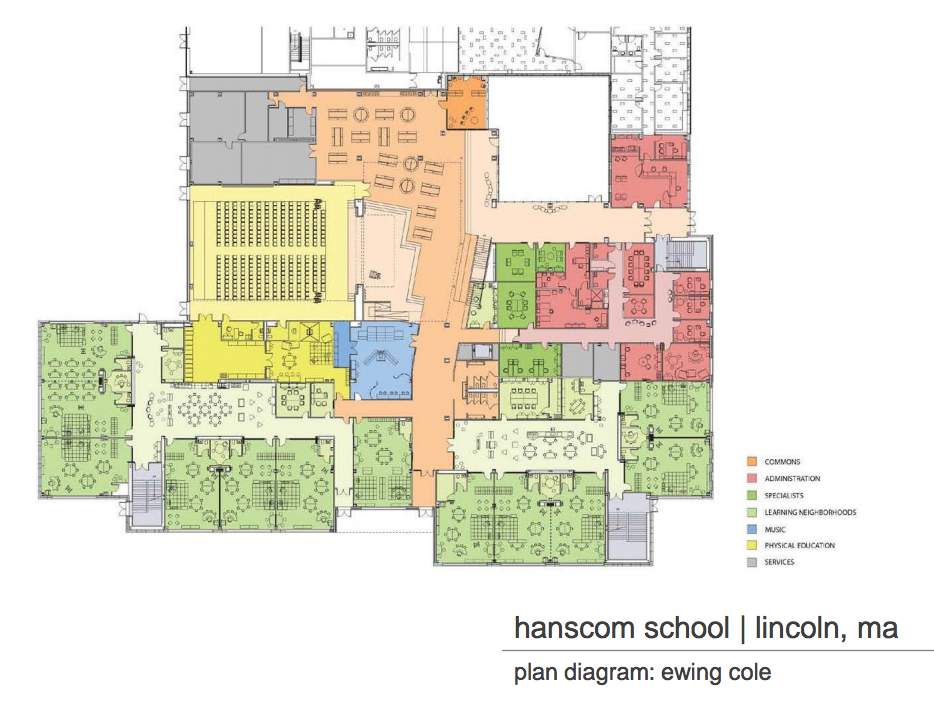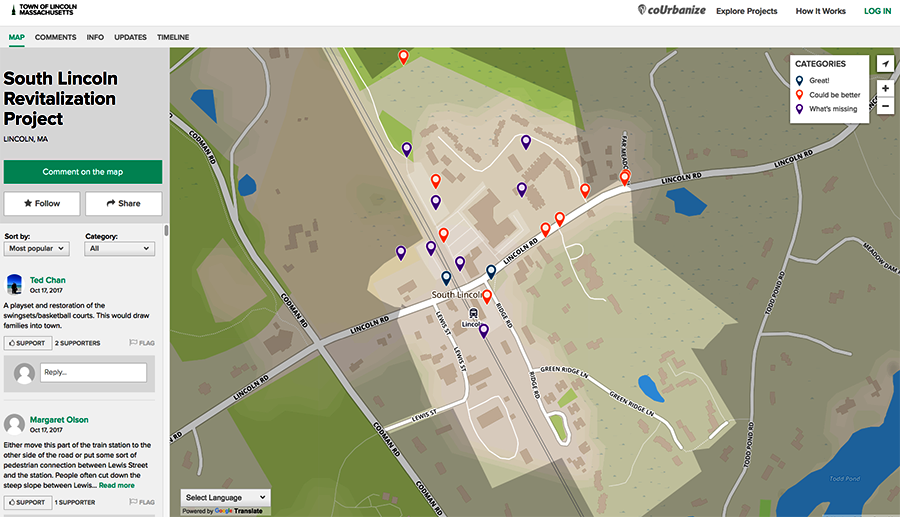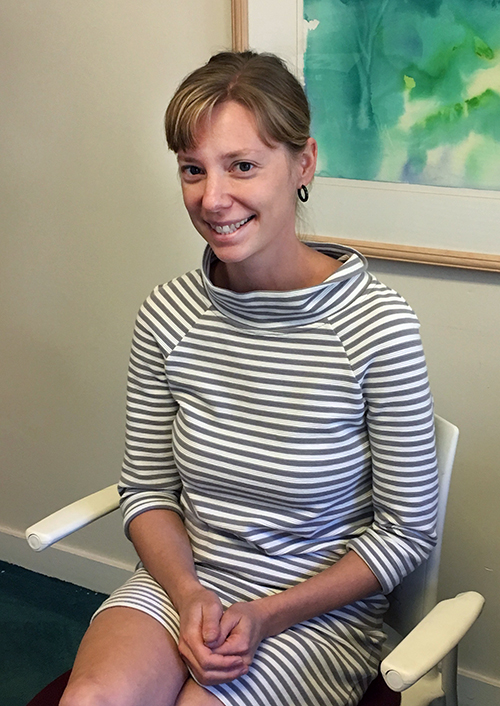 An October 23 article headlined “School committees float idea of a shared L-S/Sudbury superintendent” quoted a brief by attorney Marc Terry as saying that the ability of a town district and a regional district to share central office functions is “an unsettled point of law.” While this quote is accurate, it does mean to imply that the state Department of Elementary and Secondary Education does not allow such arrangements, only that state statutes are silent on the subject. The last paragraph of Terry’s memo notes that any potential challenge could be forestalled by an intermunicipal agreement (IMA) subject to approval by the Boards of Selectmen.
An October 23 article headlined “School committees float idea of a shared L-S/Sudbury superintendent” quoted a brief by attorney Marc Terry as saying that the ability of a town district and a regional district to share central office functions is “an unsettled point of law.” While this quote is accurate, it does mean to imply that the state Department of Elementary and Secondary Education does not allow such arrangements, only that state statutes are silent on the subject. The last paragraph of Terry’s memo notes that any potential challenge could be forestalled by an intermunicipal agreement (IMA) subject to approval by the Boards of Selectmen.
Community center group selects architect
 The Community Center Preliminary Planning and Design Committee (CCPPDC) has selected the firm of Maryann Thompson Architects to help design a proposal for a community center for Lincoln.
The Community Center Preliminary Planning and Design Committee (CCPPDC) has selected the firm of Maryann Thompson Architects to help design a proposal for a community center for Lincoln.
Massachusetts work by the Cambridge-based firm includes designs for the Atrium School in Watertown, the Broad Institute in Cambridge, the Walden Pond visitors’ center, and Temple Ahavat Achim in Gloucester. The firm is already working closely with SMMA Architects, which was hired to design the Lincoln School project.
The CCPPDC and the School Building Committee will present updates at the State of the Town meeting on November 4. By that time, “we want the two architectural firms to have spoken quite a bit and start aligning their processes and procedures, and maybe put a couple of community forums on the calendar,” said CCPPDC Vice Chair Margit Griffith.
Maryann Thompson Architects should have a proposed basic design for a community center along with firm cost estimates ready before an anticipated Special Town Meeting in June, when residents will be asked to vote on a school design, Griffith said. If and when residents decide to pursue the community center project, the town will ask for bids from firms to do the detailed design. “They’re not producing a plan for a community center that people vote on [in June] and break ground on,” she said.
The CCPPDC is drafting a timeline in conjunction with the SBC with “key choice points for decisions and deliverables by the architect,” said committee Chair Ellen Meyer Shorb. Designing a school and a community center simultaneously is “a really difficult, complex process that no one has done before, but the bottom line is to include the town early and often.”
School committees float idea of a shared L-S/Sudbury superintendent
 In the wake of the pending retirement of Sudbury Superintendent of Schools Anne Wilson, Sudbury school officials are mulling the idea of a shared superintendent for Lincoln-Sudbury Regional High School and the Sudbury Public Schools.
In the wake of the pending retirement of Sudbury Superintendent of Schools Anne Wilson, Sudbury school officials are mulling the idea of a shared superintendent for Lincoln-Sudbury Regional High School and the Sudbury Public Schools.
The Sudbury School Committee (SSC) must decide what sort of position they would begin a search for: a permanent Sudbury superintendent, an interim superintendent while other options are studied, or a shared superintendent. The Concord-Carlisle and Acton-Boxborough districts have this shared structure, with one superintendent for the high school plus one of the town’s K-8 schools, while the other town has its own K-8 superintendent. Lincoln’s K-8 students have three schools (two of which are at Hanscom Air Force Base), while Sudbury has five (four elementary schools and one middle school.
The SSC had a special meeting on September 15 meeting with Glenn Koocher, executive director of the Massachusetts Association of School Committees, to learn more about leadership reorganization options in light of the opportunity created by Wilson’s departure, which is effective in June 2018. At her group’s October 6 meeting, SSC chair Christine Hogan made a motion to explore the idea of a shared superintendency.
However, some of her fellow committee members were wary of moving too quickly even in exploring the idea of a shared superintendency.
“It benefits our students, it may benefit the town as a whole, it benefits collaboration among staff and teachers—there’s a whole host of reasons we must explore uniting both districts,” SSC member Kouchakdjian said. “At the same time, Christine, I think we need to be careful. I think we need to move slowly, methodically, and respectfully of both districts, and be especially respectful of our friends and neighbors in Lincoln… we’ve waited a long time to do this and I want to make sure we do it well.”
Other members persuaded Hogan to amend her motion to explore not just a shared superintendency, but “all options with regard to district-level organization within the town of Sudbury, pending positive affirmation” from the Lincoln and Lincoln-Sudbury School Committees.
Meanwhile, Lincoln-Sudbury School Committee chair Kevin Matthews asked LSSC attorney Marc Terry in September for a memo outlining the various superintendency options under Massachusetts law. Under a “union superintendency,” where two elementary districts and a shared high school have a single superintendent, cost savings can be achieved by pooling some administrative, financial and special-education operations, but it’s unclear to what extent this could occur under a shared superintendency, Terry wrote in his September 25 memo. The ability of a town district and a regional district to share central office functions is also “an unsettled point of law,” he added.
At the request of SSC members Lucie St. George and Lisa Kouchakdjian, Hogan subsequently obtained Terry’s memo under a public records request and shared it with the rest of her committee.
At the LSSC’s September 26 meeting, Matthews sought to “form a consensus to explore [the idea of a shared superintendency], with no commitment as to whether we would do this or not.” The idea is worth pursuing, he said, because “it would make education stronger here and it would make the financial footing for L-S much stronger, and that can only be a benefit to our partners in Lincoln.”
But other LSSC members expressed concerns about the idea. They wondered what problem the proposed exploration was intended to solve, and whether officials even have the capacity to explore the issue right now, given everything else that’s going on in both towns.
The L-S school district has “a level of autonomy and independence we’ve fiercely guarded over 50-plus years of the school, and we need to be wary on behalf of both towns of giving up that control,” said member Gerald Quirk of Sudbury.”We should always be thinking about ways to build a better mousetrap, but we need to think about what’s in it for the kids.”
“We are elected by people in both towns,” said LSSC member Nancy Marshall of Lincoln. “As we examine this, what compels us to make it a priority for this year? I want to make sure Lincoln is heard and respected and that a process is duly served, and this is some that’s not taken lightly by anybody.”
The committee decided to defer a decision on the matter until its October 24 meeting.
In an October 10 interview with the Lincoln Squirrel, Matthews (who emphasized that he is expressing only his own opinion, not that of the LSSC as a whole) said “a singular approach is superior to a bifurcated approach” for the high school, which draws about 85 percent of its students from Sudbury.
“What I would like to see for 85 percent of our kids is that we have a singular vision and singular approach to managing educational benefits for kids from pre-K through age 22… if you increase the quality of the delivery of education for 85 percent of the kids in L-S, you have affected L-S in a positive way,” Matthews said. A shared superintendency is “only tricky if you consider Acton-Boxborough and Concord-Carlisle as failed models, and most people consider those to be our peers. The idea that this doesn’t work is disingenuous at best,” he added.
The three school committees will hold a previously scheduled tri-district public forum on the topic of diversity and inclusion on Monday, Oct. 23 at 7 p.m. in Lincoln’s Reed Gym. The agenda includes remarks by Dr. William Smith of the National Center for Race Amity and short presentations from Lincoln and Sudbury residents followed by about an hour of public discussion.
Service on Saturday for Abby Slayter, 46
Abby Park Slayter, resident of Maynard and longtime resident of Lincoln and Bedford, died on October 20 at age 46 after a short illness. Abby was the cherished daughter of Henry Sands Slayter and Elizabeth Maclean Slayter; stepdaughter of Barbara Thomas Slayter; sister of Elspeth Slayter Recevik; stepsister of Gwen Michele Thomas, Patricia Karen Thomas, and Stephen Pinney Thomas; and valued friend of many in the Maynard, Bedford and Lincoln communities and beyond.
Abby was born in Seoul, South Korea in 1971 and was adopted by Elizabeth and Henry Slayter as an infant. In 1986, Abby lost her mother to cancer, but was fortunate to gain a new step-family not long thereafter, to her delight. Raised in the Lincoln school system and very involved in the church school at the First Parish, Abby also attended Reed Academy, the Gifford School, and the Cardinal Cushing Academy, from which she graduated in 1993. Abby was a regular participant in the Special Olympics as a young adult and won many gold medals for her swimming capabilities.
Enthusiastic about the outdoors, Abby regularly spent the month of August with her family in Northfield, Maine, where she enjoyed swimming, blueberry picking, hiking and canoeing. For many years, she participated in the Blueberry Festival’s one-mile fun run. Each year, she would swim one-quarter mile to an island on Bog Lake without assistance. In partnership with her sister Trisha, Abby forged a path along the lake through sweet fern, huckleberries and thick brush using hedge clippers to be able to get to a prime blueberry picking spot. At night, Abby would delight in making perfect loon calls that often garnered a reply from loons far across the lake.
In recent years, Abby lived within the Edinburg Center, where she had many friends among staff and residents alike. She especially enjoyed participating in music and dance parties. Abby was an enthusiastic participant in the First Church of Christ, Congregationalist in Bedford. She rarely missed Sunday services and treasured her participation in the church’s “Wonderful Wednesdays” series and other church events. She was also happy to participant in work programs at the Minuteman Arc for Human Services for many years, and previously for the Greater Waltham Arc. Abby delighted in life and charmed many with her infectious good humor and prankster spirit.
A celebration of Abby’s life will be held at 3 p.m. on Saturday, Oct. 28 at the First Church of Christ, Congregational, 25 Great Road, Bedford, MA, 01730. In lieu of flowers, gifts may be made to The Arc of Massachusetts, 217 South St., Waltham, MA 02453 or the Edinburg Center, 205 Burlington Rd., Bedford, MA 01730.
(Obituary courtesy of Concord Funeral Home)
Architects show how school design can enhance education

A 2014 drawing of the new Hanscom Middle School calling for “neighborhoods” of classrooms (click to enlarge).
Architects and Superintendent of Schools Rebecca McFall explained how the design elements of a school building can help realize an educational vision for its students at an October 17 School Building Committee workshop.
The building’s design should reflect the educational vision and strategic priorities as approved by the School Committee this year, said McFall, who first outlined the school’s educational needs in a renovated or new building in 2014.
“Educational environments are changing,” said architect Keith Fallon, executive vice president of EwingCole, one of the two firms hired by the SBC. Elementary and middle schools today are designed to support different ways for students to gather and work together. This means flexible spaces of various sizes in addition to the basic classroom so students can be easily taught in groups as small as three or four and as large as an entire grade.
Currently in many parts of the Lincoln School, individuals and small groups who want to work independently during a class must do so in the corridor. “It’s not that the work doesn’t happen, but the spaces could enhance that and increase the impact of the work we’re trying to do,” McFall said.
Many schools illustrated in slides by the EwingCole architects have several classrooms around a central hub rather than the traditional double-loaded corridors, as well as lots of natural light and “maker spaces” throughout. This approach maximizes teaching time by minimizing transitions from one place to another.
Larger common areas for art, music and performances can be centrally located and can even be transparent, such as the art room at the new Hanscom Middle School (HMS), which a number of residents have toured in recent months. Smaller spaces that are more private can also be carved out in a school design characterized by flexibility and ease of modification. “It’s about creating a wide range of educational experience,” McFall said.
Since the new HMS opened in the fall of 2016, students have benefited from the opportunities for student and staff collaboration that the building’s design offers. “They’re able to think about what the learning experience is and what the appropriate space for that might be, [and] they have to talk about who’s using [the common spaces] for what purpose,” McFall said. As a result, “the building has been a true catalyst for changing instruction.”
The ideal school design would also feature seamless technology infrastructure (such as places where students can plug in their own devices to work collaboratively), and a connection to the community and the environment. One of the questions the school’s design must address is “to what extent the life of the school and the life of the community should intersect?” Fallon said.
“We see the schools as an integral part of the community and a necessity for the community,” McFall said. “We’d be open to community events as much as we can.”
Another design question that impacts education is how to integrate sustainability into the curriculum, Fallon said. Seeing and measuring recycling in a new cafeteria and kitchen are natural teaching tools that aren’t available today, with cramped food service facilities without dishwashers where disposable utensils and uneaten food must be thrown out, McFall noted.
Sustainability will also be an important factor in the surrounding landscape design as well as environmental efficiencies in the building itself. Consequently, a single kitchen, cafeteria and food storage area will “absolutely” be part of the design, Fallon said. (Earlier discussions had included the possibility of two separate cafeterias for different age groups.)
In addition to residents, teachers and architects, students are getting the chance to offer their ideas for the school. Groups of students were asked to illustrate their ideas on mural-size paper the previous week and came up with some very creative ideas, including a whale pool, a water slide into the library, and a tree house that could be accessed via zipline from the computer room.
News acorns
 School, community center updates on Friday
School, community center updates on Friday
Join the School Building Committee (SBC) and the Community Center Preliminary Planning and Design Committee (CCPPDC) on Friday, Oct. 20 at 12:30 p.m. in Bemis Hall for an update on the two proposed Ballfield Road campus projects. This session is a great opportunity to get caught up on the campus projects and also to share your questions, concerns and feedback with the committees.
Water bottle documentary at St. Anne’s
The Lincoln-Sudbury Regional High School Environmental Club is joining up with St. Anne’s-in-the-Fields Church and its Climate Justice Film Series to discuss the club’s proposed single-use water bottle and plastic bottle ban and to view the documentary film Tapped. Tapped looks at the bottled water industry and its environmental, health and economic long-term effects. Join the group on Tuesday, Oct. 24 at 6:30 p.m. for a light meal and presentation by the students. The film will begin at 7 p.m. with a discussion to follow.
LFA Halloween party is Oct. 29
The Lincoln Family Association will hold its annual Halloween party at Codman Barn on Sunday, Oct. 29 from 2–4 p.m. There will be crafts, pizza, popcorn, and a trick-or-treating parade and costume contest around 3 p.m. Free for LFA members, $10 for nonmembers (maximum $25 per family).
Piano recital with Rhapsody
Rhapsody, a group of amateur pianists, will offer a piano recital on Sunday, Oct. 29 at 3 p.m. in Bemis Hall. The performance is free and open to the public. The recital will feature selections from Beethoven, Brahms, Chopin, Debussy, Godowski, Guastavino, Ginastera, Liszt, Rachmaninoff, Schubert, Shchedrin, and Schumann. Rhapsody was formed in 2003 by a amateur pianists who sought a venue in which to perform for each other, both to grow musically and to share their musical journey with others. It has since grown to 18 people from the Boston metropolitan area, and members have met continuously every month for 14 years. Now an annual event, this will be their eighth public performance on Bemis Hall’s restored Steinway.
Interactive website brings residents into South Lincoln planning

A screen shot of the South Lincoln revitalization website at courb.co/lincoln.
Using a new interactive website, residents can look at a map of South Lincoln, see some of the improvements being discussed, and add their own comments and suggestions.
The project page at courb.co/lincoln was created for the Lincoln Planning Board and the South Lincoln Planning Implementation Committee (SLPIC), which are working to make the area around Lincoln Station a vibrant, walkable and sustainable village center. Officials can post updates and respond to comments by residents as part of the public process, which also includes in-person workshops and events.
The project team behind the website can drop a “pin” on certain areas of the map to invite discussion. For example, when users click on one of pins, it opens a text box saying “If this underutilized green space next to Donelan’s and Lincoln Woods was revitalized, what events would you like to see held here?” Residents can then post and read each other’s responses, much like the comments section at the bottom of a blog post, or add their own pins to start discussion on another specific area of South Lincoln. Participants receive a notification when the project team replies.
The town was recently awarded a $400,000 Complete Streets grant for 10 projects in town, some of which include including signs, roadway markings, crosswalks, bike racks, and informational kiosks in South Lincoln. One of the website pins asks residents where they wold like to see these kiosks located.
The web platform was created by coUrbanize, a startup founded by urban planners from MIT with the goal of supplementing the traditional community process that planners use by connecting people online. “Traditional planning workshops are important, but they can be a challenge for many people to attend,” said coUrbanize co-founder Karin Brandt. “By using technology to reach people and lowering the bar to participation, we can ensure that more voices are heard.”
Letter to the editor: help Scout preserve bats
To the editor:
On behalf of the Lincoln Boy Scouts, I am writing to update the community about our declining bat population and how Troop 127 is trying to help.
In Massachusetts, there are nine different species of bats, the most common ones being the little brown bat (Myotis lucifugus) and the big brown bat (Eptesicus fuscus). As we know, these bats are extremely efficient in controlling mosquitoes, up to 600 insects per hour. A main challenge our bats are facing is white-nose syndrome, a disease originating in their wintering caves and leading to the death of a significant portion of the bat population — more than a million in the Northeast and Canada alone. Bats that are host to this disease have a white fungus (Geomyces destructans) growing on their nose or other body parts. The moisture in the caves allow this fungus to spread uncontrollably. Until scientists find a way to eradicate this illness, our troop aims to provide new, dry places for bats to live.
For my Eagle Scout project last spring, the Lincoln Boy Scout Troop and I built seven bat houses designed to house 50–60 little brown bats. The houses were hung high on trees throughout the conservation land in our town. Not only was this project ecologically beneficial — it was a satisfying task for the Scouts to participate in.
The troop would like to continue creating bat houses in the hopes of helping the struggling bat population. If you would like to contribute to this ongoing project, please donate to “Lincoln Boy Scout Troop 127″ and mail contributions to Troop Leader Christopher Bursaw Sr. at 136 Tower Rd, Lincoln, MA. Thank you for your interest.
Sincerely,
Nicholas Soukup, 2017 Eagle Scout
6 Woodcock Lane
Letters to the editor must be signed with the writer’s name and street address and sent via email to lincolnsquirrelnews@gmail.com. Letters will be edited for punctuation, spelling, style, etc., and will be published at the discretion of the editor. Letters containing personal attacks, errors of fact or other inappropriate material will not be published.
Letter to the editor: kudos to Scarecrow 5K for reusable water bottles
To the editor:
As a participant in Sunday’s Scarecrow 5K run and walk, I want to commend all involved in setting up, supporting, and implementing a wonderful morning of fun. I particularly want to thank the Lincoln Land Conservation Trust, Klean Kanteen, and the Rural Land Foundation for providing reusable water bottles to every participant in the race. This was a welcome change from plastic water bottles that are generally used in road races around the country.
Americans use 50 billion single-serve plastic water bottles a year. Only 29 percent get recycled, so most end up littering our land and our waterways, and pose a risk to our wildlife and marine life. Plastic does not biodegrade and remains in our environment for 1,000 years. Plastics leave behind and leach chemicals that are known to cause cancer and threaten our health — and the health of our ecosystems.
The long-term impacts on the planet and our health are not worth the price and convenience of cheap, convenient, single-use plastic water bottles. Thank you again to the sponsors of this race for your vision and commitment to a clean, green, sustainable Lincoln.
Sincerely,
Sheila Dennis
28 Weston Rd.
Letters to the editor must be signed with the writer’s name and street address and sent via email to lincolnsquirrelnews@gmail.com. Letters will be edited for punctuation, spelling, style, etc., and will be published at the discretion of the editor. Letters containing personal attacks, errors of fact or other inappropriate material will not be published.
Council on Aging welcomes new co-assistant director
The Lincoln Council on Aging has hired a new co-assistant director with the tools to help meet the needs of the town’s growing senior population.
Abby Butt started at the COA in September, sharing her job with Susan Isbell (she succeeds social worker Pam Mizrahi, who still leads a support group at the COA). Isbell helps seniors with applications for programs and services such as fuel assistance, while Butt handles more complicated situations where the client’s need aren’t so cut and dried.
Butt is not a social worker or counselor—she holds a PhD in gerontology from UMass-Boston’s McCormick School of Public Policy, and she’s trained in researching programs and doing needs assessments for entire communities as well as individuals. While a graduate student, she held a fellowship through the city of Somerville’s housing division, and she was outreach coordinator for the Beverly COA from 2011-16. She’s also a board member of the COA in Salem, where she currently lives.
“I discovered I really love working for cities and towns — I love working locally, kind of at the ground level,” said Butt, 34. “I enjoy doing a little of this and a little of that, and getting to know people. I’m excited about getting out into the community.” She has begun holding office hours at Lincoln Woods and making home visits, “so we can give services right where (clients) are,” she said.
Another part of Butt’s portfolio is modernizing the COA’s record-keeping. Before her arrival, all case notes were kept on paper; having them in digital form will make it easier for COA staff to follow up with clients with resorting to phone calls or lengthy emails with each other, “so the seniors are going to get much better service,” she said. The COA plans to move from hand-written to electronic sign-in for activities at Bemis Hall, “so the receptionist can focus on being welcoming and helping people instead of trying to get them to write legibly on a piece of paper about the activities they’re participating in,” Butt said.
The ability to gather growing amounts of information from individuals and government — then “distilling it down into something that’s manageable into a policy brief and recommendations and action steps,” as Butt describes it — is becoming more important every day. “We’re about to have more seniors than we ever have, and we need to be proactive.”
Research by Butt’s colleagues, among others, bears this out. The Baby Boomers have begun to retire, and improved medical technology means people are living longer — and requiring more services — as they move into their 80s, 90s and beyond.
In Massachusetts, the share of the population age 60 and older is expected to increase from 19 percent in 2010 to 28 percent in 2030, with 65+ population growing by 61% and the 85+ population by 34 percent, according to UMass-Boston’s Center for Social and Demographic Research on Aging. As a result, most cities and towns in the Commonwealth will have at least 50% more seniors in 2030 than they do today—so Lincoln is hardly alone in confronting the need for better facilities and programs for its older residents.
“Abby has already made a wonderful difference here at the COA by bringing not only her enthusiasm and skills, but also lots of ideas from the other COAs she’s worked with,” said COA director Carolyn Bottum. “She’s helped us take a fresh look at how we do things and some of our procedures, and she’s also suggested a number of important and entertaining programs that we’ll be offering here in the next few months.”
The town of Salem, where Butt sits on the COA board of directors, has just broken ground for a new community center. That experience should also prove very useful “to help us ensure that we are bringing the best possible proposal to the town for a community center at the appropriate time,” Bottum said.


